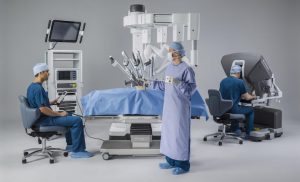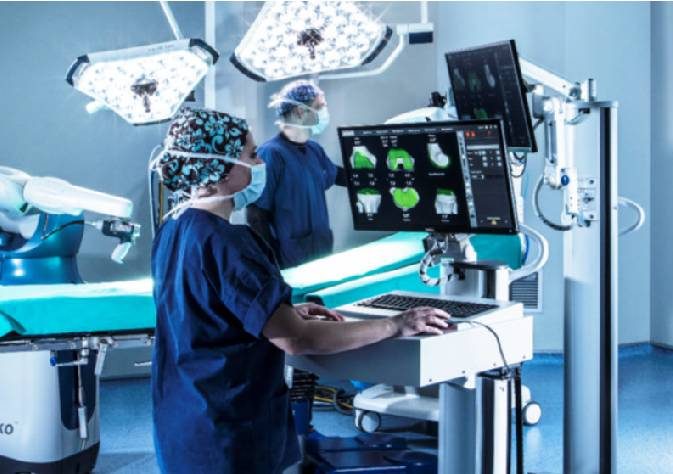Right now, a PET CT scan is the most popular imaging technique utilised to diagnose and then manage cancer as compared with other procedures. But most times a PET scan is not enough to differentiate between cancerous and non-cancerous tissue. This necessitates a biopsy. The only time biopsy is not required as a diagnostic procedure is when the imaging technique specifies the tumour type.
A biopsy has to be first planned and then performed with utmost precision. It is done only after correlating the findings from other techniques such as:
• Ultrasonography
• contrast-enhanced CT
• magnetic resonance imaging
• other radiologic procedures
 Because each of these techniques gives off high-energy annihilation radiation, it is crucial to have shielding tools. While it is impossible to complete radiation doses to personnel conducting the PET or CT scan, steps can be taken to design PET scanners that minimise radiation levels and continuously monitor them.
Because each of these techniques gives off high-energy annihilation radiation, it is crucial to have shielding tools. While it is impossible to complete radiation doses to personnel conducting the PET or CT scan, steps can be taken to design PET scanners that minimise radiation levels and continuously monitor them.
The present case study aims to explain the radiation burden personnel who conduct a robotic arm-assisted PET/CT- guided metabolic biopsy and those who assist during the procedure. The case study is limited to tertiary health care centres. By estimating the radiation burden, better steps can be taken to protect them.
Who comprises of the critical group exposed to radiation?
During a biopsy, the people exposed to radiation are:
a) Interventionist
b) helping physician
c) other staff involved
It is these personnel that need to be checked annually to ensure their radiation dose is within the prescribed limits.
How can radiation be minimised during these procedures?
Any type of radiation is harmful to the human body. It is why it is essential to protect every person from it or minimise the exposure. Currently, there are three ways that regulatory authorities assign to protect against radiation:
a) Time after radioactive element injection.
b) Distance from the patient
c) Shielding from the radiation
Keeping the physician and other staff members away from the patient is not feasible because proximity is required to conduct biopsies. We already know that biopsies are commonly needed to diagnose right cancer. Since the source of the radiation is the patient, no person can stay a safe distance away from them. Moreover, the patient cannot be shielded because it is on them; the procedure has to be conducted.
The healthcare providers can wear a lead apron to shield themselves, but it is not practical. To wholly intervene the photons, the apron has to be of considerable thickness, which makes significantly heavy. Carrying such a heavy load while performing a procedure is neither safe nor practical. These elements mean that both distance and shielding are out of the picture when it comes to minimising radiation exposure.
How does a robotic-arm guided PET technique help?
The only way left is to minimise the time spent near the source of radiation. A robotic arm-assisted PET Scan is a device that helps achieve this goal. The gadget is accurate and fast when it comes to placement of the needle near the legions that need to be diagnosed for cancer or treatment plan. It targets precisely and in a single-pass even deep-seated lesions that necessitate multiple angles. This reduces the time the diagnostic centre personnel spend in the vicinity of the patient, drastically. Ultimately, the robotic arm reduces radiation exposure.
device that helps achieve this goal. The gadget is accurate and fast when it comes to placement of the needle near the legions that need to be diagnosed for cancer or treatment plan. It targets precisely and in a single-pass even deep-seated lesions that necessitate multiple angles. This reduces the time the diagnostic centre personnel spend in the vicinity of the patient, drastically. Ultimately, the robotic arm reduces radiation exposure.
Another reason the robotic arm reduces the time the practitioner faces is the lack of fluoroscopy. The needle placement in such a procedure is not conducted under it, which decreases radiation exposure.
The case study concluded that it is the interventionist that gest the highest dose of radiation exposure. Therefore, it is them that need to be protected the most as compared to the helping personnel. The reason the interventionist has higher exposure than even the physician is the distance and time. They spend the most time with the patient and at the least distance.
A robotic arm-assisted PET/CT-guided biopsy is one of the safer interventional techniques when considered solely from a radiation exposure perspective. When used correctly, they keep the exposure within the boundaries set by regulatory authorities, making them one of the safest methods of diagnosing cancer. When good practice and a lower trace dose is added to robotic arm guided PET biopsy, they become even more reliable.

